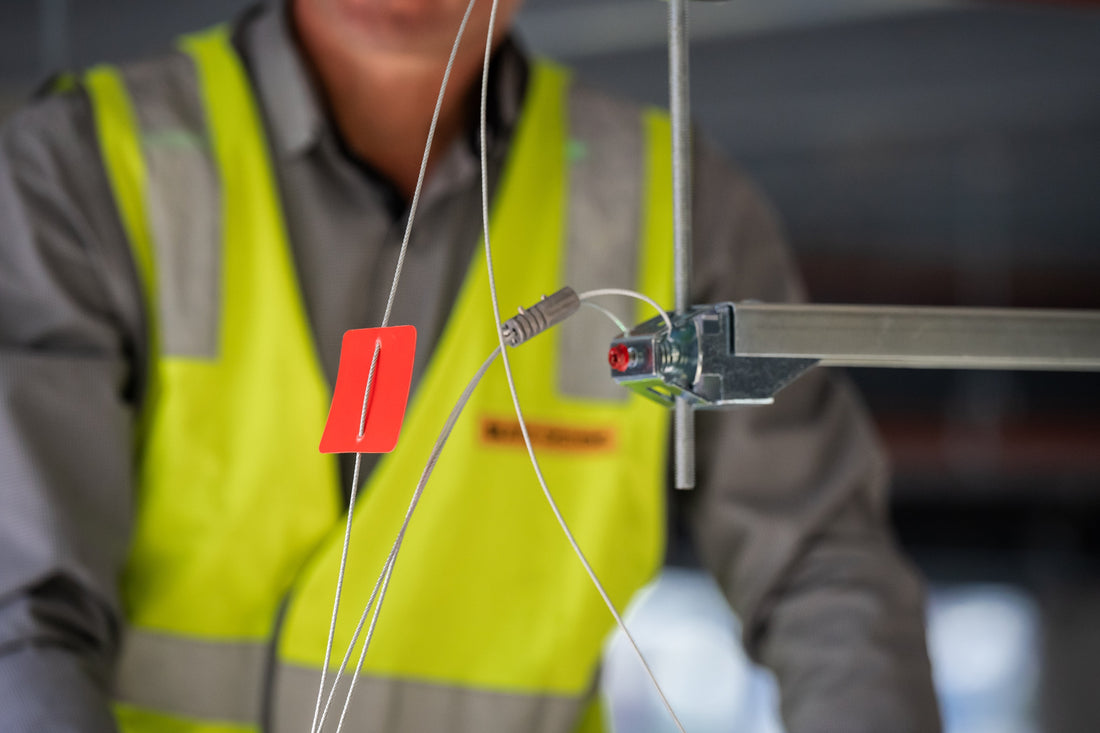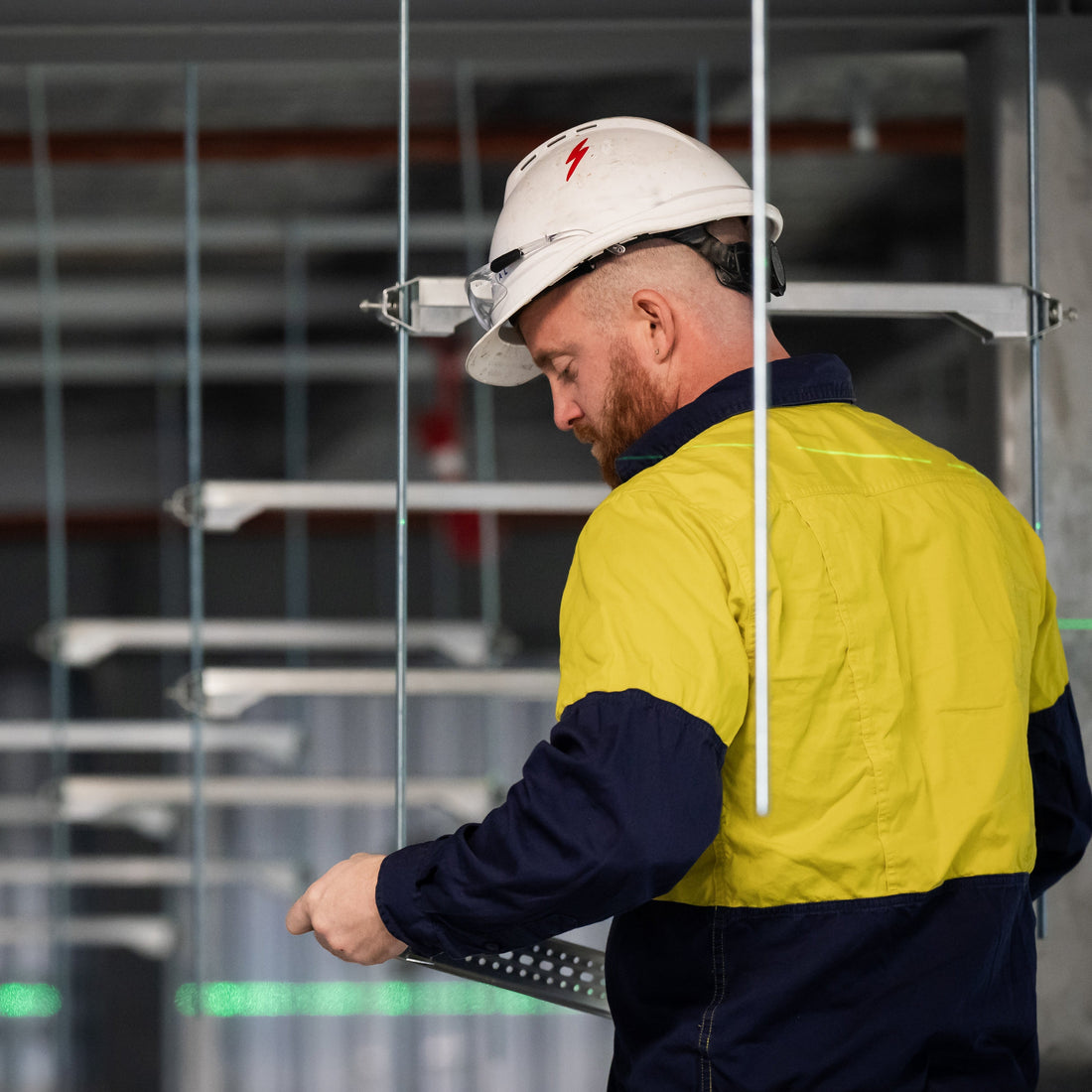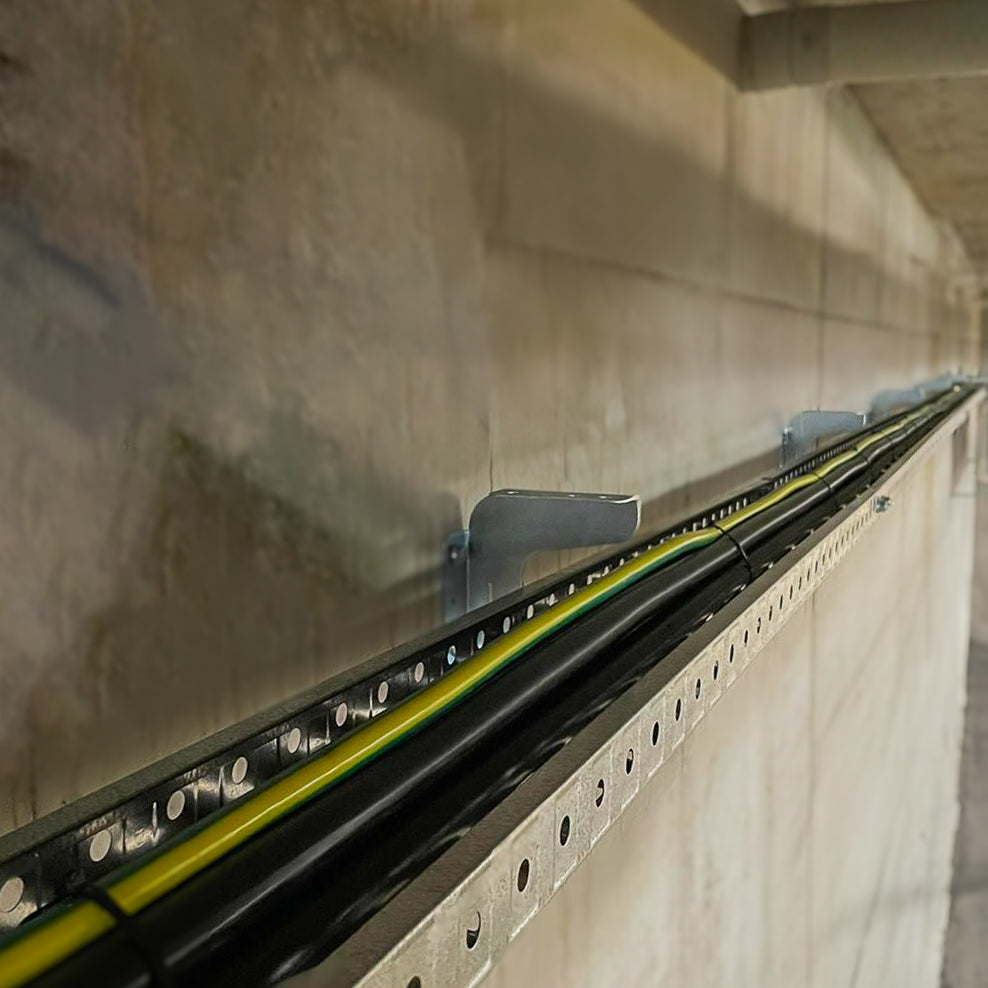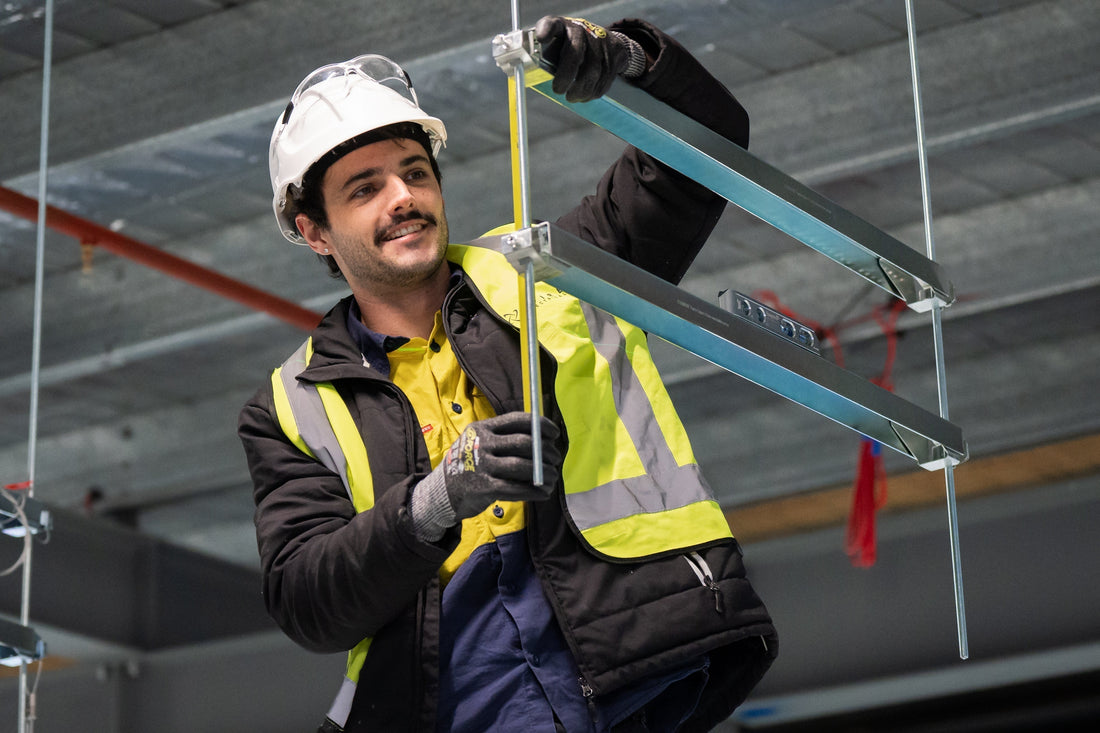Seismic Compliance Explained: Essential Protection for Every Cable Ladder Installation Project
Imagine a state-of-the-art data centre filled with miles of cabling suspended on overhead ladders. The operation is seamless until an unexpected seismic event hits. Within seconds, poorly secured systems collapse, damaging critical infrastructure and threatening the safety of every person inside.
This isn’t just a hypothetical risk. In regions where seismic activity is a concern, the way cable ladder installation is designed and executed can mean the difference between business continuity and catastrophic loss. And the stakes are only rising. Natural disasters already cost Australia an estimated A$18 billion per year, with projections suggesting that figure could soar to A$39 billion annually by 2050.
Seismic events, though less frequent than floods or bushfires, are particularly damaging because even moderate tremors can cripple critical infrastructure, magnify downtime, and create cascading financial and operational losses.
This makes seismic compliance far more important than a regulatory hurdle. It’s a vital safeguard that protects lives, ensures operational resilience, and shields your project from expensive financial setbacks, insurance issues, and reputational damage.
At Blitz, we provide proven, field-tested solutions that not only simplify compliance but also significantly reduce on-site risks, cut down installation time, and give you the certainty that every project stays on schedule and within budget.
This article breaks down the essentials of seismic compliance: what it involves, why it’s non-negotiable in modern infrastructure, and how Blitz equips you to ensure your systems remain resilient and ready to perform under pressure.
What is Seismic Compliance for Cable Ladder Installation?

It refers to meeting engineering standards and building codes designed to ensure that both structural and non-structural elements can withstand seismic events. Non-structural elements include systems like lighting, piping, and, crucially, cable ladder installation.
When an earthquake occurs, cable ladders are exposed to sideways and vertical forces. Non-compliant systems may collapse or detach, leading to damage, safety risks, and project failures.
Key Principles of Seismic Compliance for Cable Ladders
-
Load Resistance
Systems must be designed to resist seismic forces from multiple directions. This means ensuring ladders and supports can handle both vertical and horizontal stresses without failing. -
Flexibility vs. Rigidity
It must absorb and adapt to seismic movements. Overly rigid systems break, while overly flexible ones fail to control motion. The right balance ensures controlled movement without collapse. -
Anchoring and Bracing
Proper anchoring and bracing prevent cable ladders from detaching during seismic shifts. Techniques like transversal and longitudinal bracing distribute forces and add stability.
International standards, such as the International Building Code (IBC), and regional codes like AS/NZS in Australia and New Zealand, outline seismic design categories and performance requirements. While technical details vary, the principle remains: compliant systems safeguard both people and infrastructure.
Why Seismic Compliance is Critical: The Unseen Dangers and Business Impact

Seismic compliance isn’t optional; it’s essential. The risks of neglecting it extend beyond construction quality into human safety, financial security, and long-term business resilience.
-
Safety of Personnel
During an earthquake, unsecured cable ladders can fall or dislodge cables, posing severe risks to occupants, contractors, and even emergency responders. Protecting lives is the most important reason to prioritise seismic compliance in cable ladder installation. -
Protection of Critical Infrastructure & Data
Hospitals, data centres, emergency services, and industrial plants all rely on uninterrupted electrical and communication systems. If these systems fail because of collapsed cable ladders, the consequences include operational paralysis, delayed response times, and potential loss of life. -
Financial Impact & Investment Protection
Ignoring seismic compliance often results in expensive repairs. Businesses face downtime, lost revenue, and damaged client relationships. Plus, insurers may raise premiums or refuse coverage altogether (for non-compliance). Investing upfront in compliant cable ladder installation significantly reduces these risks and protects long-term profitability. -
Legal & Regulatory Requirements
Seismic compliance is mandatory in designated seismic zones. Failure to comply can halt projects, invite penalties, or even result in legal liabilities if non-compliant systems contribute to harm. -
Reputation & Trust
Reputation builds a business (or breaks it). A compliance failure that causes safety issues or downtime can escalate into negative media coverage and client distrust. Compliance positions your organisation as a responsible and trustworthy partner. -
Long-Term Operational Resilience
Compliance isn’t just about surviving an earthquake; it’s about recovering quickly. Robust systems that remain functional (or can be restored with minimal effort) ensure businesses resume operations rapidly, reducing long-term disruption.
For industries where downtime equates to millions in losses, seismic compliance in cable ladder installation is non-negotiable. It protects lives, secures critical assets, and preserves your reputation.
Building Resilience: How Blitz Ensures Seismic-Compliant Cable Ladder Installation

Achieving seismic compliance requires more than just purchasing a cable ladder system. It involves a combination of engineering design, certified products, and skilled installation. This is where Blitz Support Systems play a pivotal role.
Key Considerations for Compliant Installation
-
Product Certification
Not all systems are built to handle seismic conditions. Certified components ensure a cable ladder installation can withstand the stresses of an earthquake. Use products that are independently tested to meet safety and compliance standards. This ensures long-term safety and compliance. -
Engineering & Design
Proper seismic design requires input from qualified engineers who can calculate load paths, brace requirements, and force distribution. Effective planning ensures that every element works together to withstand seismic forces and maintain system integrity. -
Proper Bracing & Supports
Bracing, whether transversal or longitudinal, is essential to prevent detachment. Appropriate supports and fixings ensure stability, structural performance, and consistency under seismic conditions. -
Load Capacities
Exceeding system load limits is a common failure point. Clearly defined load ratings ensure that project managers and installers can execute installations that stay compliant and structurally sound. Innovative support solutions from Blitz, such as STUDBITE Supports, offer quick, reliable installation and dependable performance -
Installation Expertise
Even the best-designed systems require skilled installation. Pre-engineered and tool-free solutions can help reduce complexity on-site, minimize assembly errors, and significantly shorten installation times.
How Blitz Systems Supports Compliance

-
Designed for Seismic Compliance: Our solutions are independently tested and certified, and meet the strict requirements of ANSI/ASHRAE 171-2017, aligned with AS 1170.4 for earthquake actions in Australia. This means every product is engineered and proven to deliver compliance, safety, and long-term reliability.
-
Simplified Compliance: Blitz’s pre-engineered solutions remove guesswork, reducing complexity so organisations can achieve compliance faster, with fewer errors and delays.
-
Reduced On-Site Variables: By limiting cutting, welding, and hot work, our products lower the chances of mistakes and ensure better consistency and safer installation across projects.
-
Expert Support: Our experts have an in-depth understanding of seismic requirements. You’ll receive clear guidance on correct product selection and application, therefore, enabling you to streamline projects, cut costs, and reduce risk.
-
Compliance Leadership: More than parts, Blitz delivers 360-degree support systems that are tested, certified, and set the benchmark for safety, reliability, and seismic compliance.
CONCLUSION
Seismic compliance is not a box to tick; it’s a critical investment in safety, operational continuity, and financial security. For industries where system failure is simply not an option, compliant cable ladder installation ensures resilience when it matters most.
Blitz is proud to be at the forefront of compliance leadership. Our products are designed, tested, and proven to meet seismic demands, simplifying compliance for project managers, contractors, and business owners.
Seismic Events Won’t Wait; Why Should You? Partner with Blitz Systems and ensure your cable ladder installations are safe, compliant, and built to last. CONTACT US for an Obligation-Free Consultation. Our experts will guide you on how to meet seismic standards, eliminate delays, and stay 100% compliant.
Frequently Asked Questions
-
What exactly does seismic compliance mean for a cable ladder installation?
It means that the cable ladder system has been designed, tested, and installed to withstand the forces of an earthquake.
-
Why is seismic compliance so critical for cable ladder systems?
Cable ladders carry often power, data, and communication lines. In a seismic event, a non-compliant system can collapse, causing outages, downtime, or even safety hazards.
- Why is seismic compliance so critical for cable ladder systems?
No. Standard cable ladder systems are not designed to withstand seismic forces. Only systems that are independently tested and engineered for seismic conditions can be considered compliant. -
What are the main components of a seismic-compliant cable ladder installation?
A seismic-compliant installation typically includes:
-
Engineered cable ladders designed for strength and stability.
-
Pre-tested brackets, supports, and fixings that secure the system.
-
Seismic bracing and anchoring to handle movement during an event.
-
Correct installation practices to eliminate weak points.
-
- How does Blitz Systems help ensure seismic compliance in cable ladder installation?
Blitz simplifies compliance by providing pre-engineered, tested solutions that reduce on-site complexity. Our tool-free systems eliminate cutting and welding, lowering errors. Plus, our experts will guide you in the selection and application of the right products






